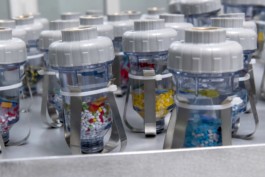
Devouring the Earth, in Perishable Quantities
2020-ongoing. Materials include soap, computer chips, solar batteries, floral sponge, bentonite clay, industrial microplastics, found microplastics, washing machine filters, aluminum, water, and glass.
Installation shots from Open Studio Days at Saha Studio, Istanbul, Turkey, December 2020.
Commissioned within the scope of SAHA Studio program and produced with the support of SAHA.
Video documentation by Ilgar Gökhan and Oytun Yönyüksel. Photos by Kayhan Kaygusuz.
Devouring the Earth, in Perishable Quantities is a body of work that contemplates the ways we devour the earth and the underground, both literally and metaphorically. Human and non-human communities have indulged in practices of geophagia (eating dirt), at times as a means to receive particular minerals, at other times as a way to establish a connection with the land. These practices became shameful for people over several centuries. However, today eating clay and other minerals has made a comeback as healing practices and a way to boost immunity.
Departing from the act of eating the earth, the installation brings together several materials; non-food items we devour both intentionally and involuntarily throughout our daily lives. It covers a range of cases across different lands: kaolin that is extracted from the mines in Georgia and later sold in zip-locks in supermarkets as Grandma’s White Dirt; arsenic that was regularly ingested by different communities in Austria in the 19th century; and the microplastics that find their ways into our guts through the city water. Devouring the Earth, in Perishable Quantities investigates the limits of hosting a foreign substance/matter in a body, and borrows forms from the geological and biological extraction processes. Within the installation microplastics meander in washing machine filters, arsenic in the solar pills, and computer chips slip into soaps and artificially manufactured mineral blocks unite with kaolin and transform into medicinal clays. It hosts various processes of leakage, amalgamation, and digestion across different temporalities. In doing so, it aims to underscore the entanglement within the acts of eating/consuming/devouring that are often promoted as choice-based; and the points and practices of continuity between humans and other agencies.
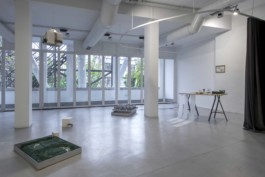
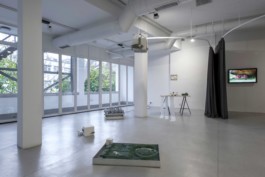

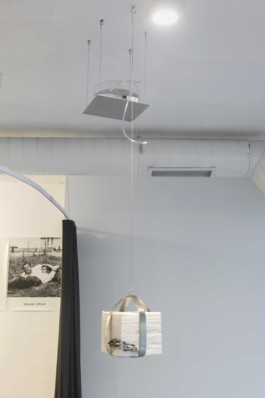
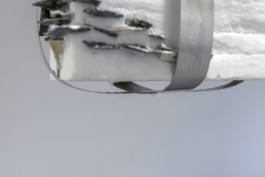

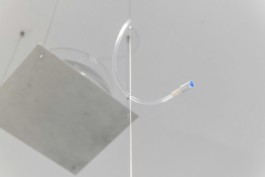

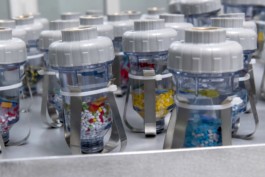


Devouring the Earth, in Perishable Quantities
2020-ongoing. Materials include soap, computer chips, solar batteries, floral sponge, bentonite clay, industrial microplastics, found microplastics, washing machine filters, aluminum, water, and glass.
Installation shots from Open Studio Days at Saha Studio, Istanbul, Turkey, December 2020.
Commissioned within the scope of SAHA Studio program and produced with the support of SAHA.
Video documentation by Ilgar Gökhan and Oytun Yönyüksel. Photos by Kayhan Kaygusuz.
Devouring the Earth, in Perishable Quantities is a body of work that contemplates the ways we devour the earth and the underground, both literally and metaphorically. Human and non-human communities have indulged in practices of geophagia (eating dirt), at times as a means to receive particular minerals, at other times as a way to establish a connection with the land. These practices became shameful for people over several centuries. However, today eating clay and other minerals has made a comeback as healing practices and a way to boost immunity.
Departing from the act of eating the earth, the installation brings together several materials; non-food items we devour both intentionally and involuntarily throughout our daily lives. It covers a range of cases across different lands: kaolin that is extracted from the mines in Georgia and later sold in zip-locks in supermarkets as Grandma’s White Dirt; arsenic that was regularly ingested by different communities in Austria in the 19th century; and the microplastics that find their ways into our guts through the city water. Devouring the Earth, in Perishable Quantities investigates the limits of hosting a foreign substance/matter in a body, and borrows forms from the geological and biological extraction processes. Within the installation microplastics meander in washing machine filters, arsenic in the solar pills, and computer chips slip into soaps and artificially manufactured mineral blocks unite with kaolin and transform into medicinal clays. It hosts various processes of leakage, amalgamation, and digestion across different temporalities. In doing so, it aims to underscore the entanglement within the acts of eating/consuming/devouring that are often promoted as choice-based; and the points and practices of continuity between humans and other agencies.








